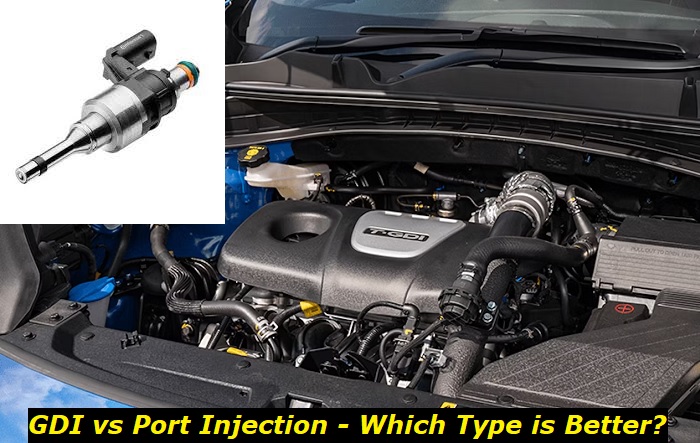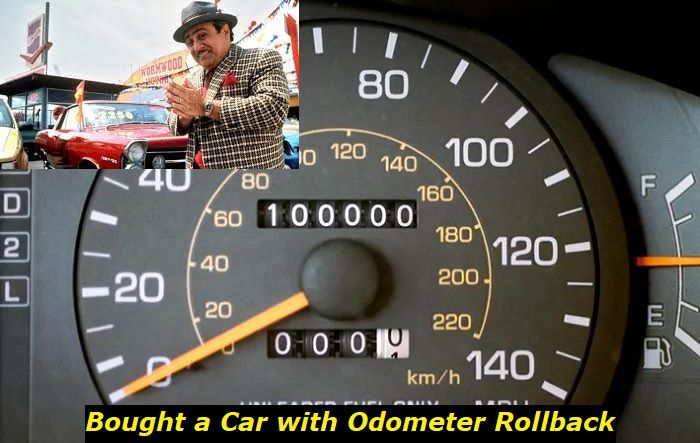GDI engines have direct injection in the combustion chamber and they are more efficient than port-injection engines but also have some more problems. When considering which type of engine you want to buy, you need to understand both pros and cons of each type of engine.
Injection problems highlights
- Level of importance:High
- Can you drive?Usually, yes
- DIY inspection:Possible but complicated
- DIY repairs:Mostly,impossible
- Price of repair:$350 - $850
- Commonreasons:Clogging, age, electrical problems
- How to fix:Verify electrical connectors, clean the injectors, swap them to see if the codes change

Difference between GDI and port-injection engines
Port injection is the classic technology that came to change carbureted injection decades ago. But now port injection is considered pretty outdated because of some problems with efficiency.
Direct injection is a newer technology with a much more complicated mechanism but better fuel efficiency. This technology is used thanks to its high ecology standard and some other advantages.
Here are the common differences that you should know about:
- Fuel pumps. The port injection uses one fuel pump that's located in the tank and works for ages while the direct injection system needs two pumps - one of them is a High-Pressure Pump which is usually quite faulty and problematic.
- Location of the injectors. In GDI engines, injectors are placed directly in the combustion chamber. While port-injection engines have their injectors located in the intake manifold. So, in GDI engines fuel is supplied directly to the chamber and it reduces the possible losses.
- Fuel pressure. While port-injection engines have just small pressure of the fuel, the direct injection develops 60 PSI to 4000 PSI pressure in the injectors which is insane. Of course, this can also lead to issues.
- Type of injectors. GDI injectors are much tougher and can withstand much higher pressure. Also, they are good to work in extremely high temperatures. Port injectors are simpler in their design, so they are much more affordable.
These are the key differences in the systems. Of course, there are much more things that I could tell you about. But to catch the point of this article, this basic info seems to be enough. It's still hard to say which type of injection is better because each one has its pros and cons. So, let's see which advantages may be considered when you are choosing between two engines with different types of injection.
Port injection - advantages and flaws
We'll start with the older port injection system and outline its advantages and problems.
Here are some good points I can think of:
- this is a very reliable and cheap-to-maintain system of injection;
- it sends the fuel through the intake valves cleaning them and making them serve longer;
- the system is not hard to diagnose - there are just a couple of units that can fail;
- the system provides an evenly mixed air-fuel mixture to the combustion chamber.
But things get much darker when we look at the common flaws of the port-injection system. Here they are:
- the system is outdated and not efficient in terms of fuel consumption;
- the power of the engines fitted with port injection is limited and never too high without a turbocharger;
- port injection engines are not brilliant in terms of emissions.
Well, a lot of super important problems are here. These engines drink up more fuel, throw away more emissions, and also aren't that cool to drive. Their power is limited due to very limited performance. And manufacturers need to enlarge the displacement to make these engines fun to drive.
What about GDI engines' pros and cons?
Direct injection engines have great advantages that you should remember:
- they are more powerful than port-injection engines with the same displacement;
- they are better to drive because they give you instant power when you press the pedal;
- these engines are much better in terms of emissions and ecology;
- fuel consumption is much better than with port-injection engines with the same power;
- manufacturers may use smaller engines in bigger cars and improve emission control even further.
You may think - why then do so many car manufacturers still have those old port-injection engines under the hoods of their new cars? Well, that's because not all people want to buy GDI engines and for a reason.
Here are some common issues with direct injection:
- these engines have problems with intake valves - they get contaminated at 50,000 miles or so and just stop working;
- the HPFP (the high-pressure pump) is almost always faulty and this unit is extremely expensive;
- injectors are much more expensive and they are much more often failing and asking for repair or replacement;
- maintenance of the direct-injection engine, especially the high-mileage one, is pretty expensive.
As you see, car buyers who still choose the port injection system know a thing or two about cars. Yes, they pay a little more for fuel but they don't have any problems with the injection system. Eventually, they drive their cars longer without paying thousands for injection system troubleshooting and repair.
Now that you know about both systems, it's important to choose the proper vehicle for you. But before we do that, let's look at one more new type of fuel injection in gasoline cars.
Combined GDI plus port injection
Recently, a number of car manufacturers offered a new injection system. It's the classic direct injection but the engines also have simple port injectors that are sometimes activated. This helps the engine get rid of carbon buildup on intake valves. Also, it gives you the opportunity to still drive the car when something is wrong with the HPFP.
So, it seems so cool that you have the advantages of both systems and now the direct injection doesn't seem that risky and problematic. But are there any potential problems with these combined injection systems?
Here are some of the flaws:
- the system still has the HPFP and very expensive injectors that may require maintenance or replacement;
- the system has additional control units that may fail and glitch making it impossible for you to drive a car;
- the combined injection system combines not only advantages but also problems of both systems;
- this system needs more actuators, sensors, and wires that may eventually fail and leave you stranded on the roadside.
Although I see the combined fuel injection as a good alternative to the simple direct injection system, it still needs some time to develop. The system is much more complicated than any other type of injection we knew before and this scares me a bit. The new car will obviously be OK, but what about the car that hits 100,000 miles? Won't it require a couple of thousand dollars every year to repair the system?
I believe this is still a good thing to buy because the system is efficient and quite reliable - it won't leave you stranded because it has an alternative injection system.
What type of injection is good for you?
Actually, I wouldn't choose a car according to the type of injection that it's fitted with. I would pay attention to a lot of other important features.
But if it comes to two equally good vehicles and one of them is GDI while the other is port-injected, then here are some things to consider.
You should understand that port-injection vehicles will take more money from on a daily basis but they will cost much less to maintain overall. Also, port injection is just more reliable and can work till the engine drops without any serious problems.
Direct injection is good for those who want to save some money on fuel costs and also who aren't going to drive the car for 200,000 miles or so. If you like changing your cars every other year, then you should go for the direct injection engine.
But I would still try to find some other important features to look at like price, leasing conditions, accessibility of the dealership in your area, etc. Maybe, this will help you decide.
Final thoughts
Although there are a lot of important differences between port injection and direct injection, I wouldn't make it a key point in comparing two different cars. The majority of modern vehicles come with direct injection or combined direct-port injection. And they are good to drive, they save some money for you every single day, and they are quite powerful.
I am a conservative car owner and I love older and more reliable technologies. But if I thought that way without changing my mind and accepting the new tech, I would still own a super-old truck with the big and nasty carburetor under its hood that would go 5 miles per gallon and leave a huge cloud of smoke behind.
About the authors
The CarAraC research team is composed of seasoned auto mechanics and automotive industry professionals, including individuals with advanced degrees and certifications in their field. Our team members boast prestigious credentials, reflecting their extensive knowledge and skills. These qualifications include: IMI: Institute of the Motor Industry, ASE-Certified Master Automobile Technicians; Coventry University, Graduate of MA in Automotive Journalism; Politecnico di Torino, Italy, MS Automotive Engineering; Ss. Cyril and Methodius University in Skopje, Mechanical University in Skopje; TOC Automotive College; DHA Suffa University, Department of Mechanical Engineering






Add comment